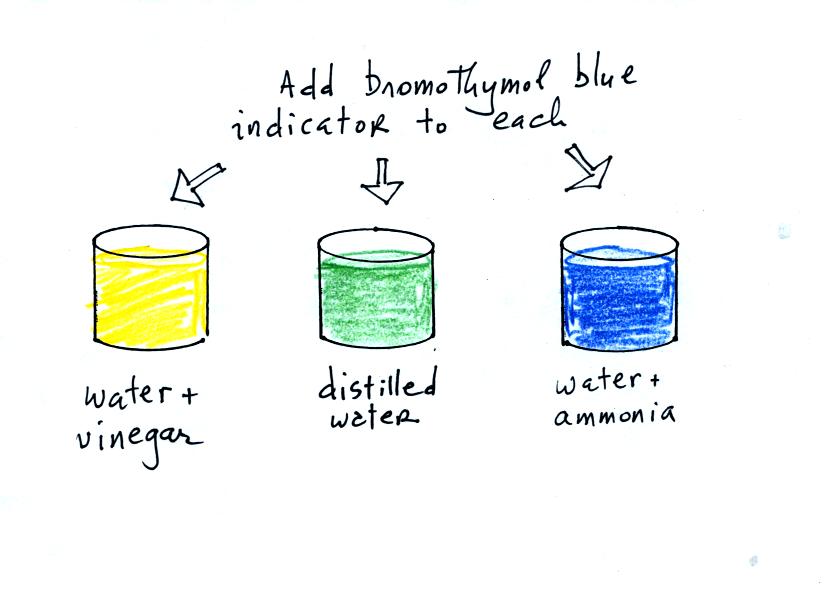

See 27.124 Dichromatism, bromophenol blue, resazurin, pumpkin seed oil.

Prepare bromocresol purple indicator: 0.1 g bromocresol purple in 18.5 mL 0.01 M NaOH + 231.5 mL of water.ħ.0 Bromophenol blue, acid-base indicatorīromophenol blue, C19H10Br4O5S, (tetrabromophenolsulfonephthalein, 2-bromo-2-methylbutane, t-butyl bromide Prepare bromocresol green solution: 0.1 g in 14.3 mL of M NaOH + 235.7 mL of water.Ħ.0 Bromocresol purple, acid-base indicatorīromocresol purple, acid-base indicator, C21H16Br2O5S, dibromo-0-cresolsulfone phthalein Īnthraquinone, C14H8O2, (9, 10-dioxanthracene)īenzopurpurin 4B, acid-base indicator, 1-naphthalene sulfonic acid, benzopurpurin 4b, C34H26N6O6S2, sodium salt,ĭirect red, cotton red 4b, red acid dye, changes from violet to red in the pH range 1.2-4.0, formerly used as a stain andĪs an indicator, for liquid crystal displays, inks, dyes, micro-organism stains.Ĥ.0 Brilliant yellow, acid-base indicatorīrilliant yellow, direct yellow 4, C26H18N4Na2O8S2ĥ.0 Bromocresol green, acid-base indicatorīromocresol green (3',3',5',5'-tetrabromo-m-cresol-sulfonephthalein), C21H14Br4O5S
:max_bytes(150000):strip_icc()/__opt__aboutcom__coeus__resources__content_migration__mnn__images__2018__07__pH_scale-6c5cb15299a643d7899c3055bfb9d625.jpg)
Īlizarin yellow as sodium salt, C13H8N3NaO5. Repeat the process until the solution has a straw yellow colour.Ģ.0 Alizarin yellow R, acid-base indicatorĪlizarin yellow, mordant orange l (sodium salt), azo dye, rust colour, Harmful if ingested.Īlizarin yellow as acid: C13H9N3O5, O2NC6H4N=NC6H3-2-(OH)CO2H. If the solution is not decolorized enough, add 10 mL of M sodium hydroxide solution. The colour should change from red to brown. Mix the solution and leave to stand for one day. School Science Lessonsĥ.6.3 Prepare acid-base plant extract indicatorsĪcid fuchsin, Andrade's acid fuchsin, acid violet 19, fuchsin S, fuchsin acid, rubine S, C20H17N3Na2O9S3Īdd 5 g of acid fuchsin to deionized water.Īdd 150 mL of M sodium hydroxide solution.
#Ph when you mix base with water how to
So here are the two equilibrium constant expressions for both of those reactions at the top of the page.Learn how to prepare useful acid-base indicators. And, if you have a weak base, the equilibrium constant will be K b. And, to make it even more obvious that you are dealing with a weak acid, the equilibrium constant will be K a. Remember that equilibrium constants show a mathematical ratio based on the product concentrations over the reactant concentrations (see section 6.4). K's do NOT change with concentration - they are true to their name - a constant. This is why we use equilibrium constants ( K) as our reference. We could list percent ionization WITH a matching popular concentration - like 0.10 M. The problem is the pH will be 7 at that point because it is infinitely dilute. The limit of this rule is that at infinite dilution, all weak electrolytes (weak acids and bases) will ionize 100%, just like a strong electrolyte. All weak acids will ionize a bit more the more dilute the solution is. The problem with percent ionization is that it changes with concentration.

If you lookup a weak acid and are hoping to find its percent ionization, you will be disappointed. Notice that underneath the percent ionizations in the figure are the \(K_\) values. And the third is hydrocyanic acid (HCN) - an even weaker acid. The second is acetic acid (CH 3COOH) - a weak acid. The first is a hydrochloric acid (HCl) - a strong acid. Remember, the nearer to pH 7 you are, the more neutral the water is and that means the substance you put into solution is weaker than the one with the pH further from 7.Ĭompare below the same concentrations of three acids and the resulting pH and percent ionizations of the solutions. This is why when you mix a weak acid or weak base at the same concentration as a strong acid or base, you will get a pH that is nearer 7 for both. This means that 99% the original HA and B put into water stays as a soluble neutral molecule (no ionizing). The fact that they are playing the role of a weak acid and a weak base also means that the forward reaction only proceeds by 1%. Our generic reactions for a weak acid (HA) and a weak base (B) in water are the following:


 0 kommentar(er)
0 kommentar(er)
